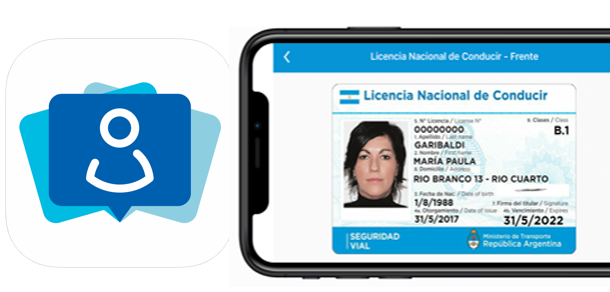Argentina digital ID powered by HID mobile technology
24 February, 2020
category: Digital ID, Government
Latin America is undergoing a kind of digital and mobile revolution these days, changes that are starting to impact all areas of daily life, including payments, commerce, government and, its expanded to include Argentina digital ID. Further evidence of that comes from one of the region’s largest and most influential countries, Argentina, where authorities, backed by HID Global, have embarked upon a relatively new mobile national digital ID program.
The Mi Argentina mobile ID is now considered fully equivalent to the traditional form of the country’s national identity documents
What that means, specifically, is that the government of Argentina has decided to use HID global citizen technology “to power the country’s digital version of its mandatory National Identity Document for its Mi Argentina app,” according to a statement from HID. On that app resides the mandatory national identity documents of Argentinian citizens, who can use Mi Argentina for such tasks as proving their identities via mobile driver’s licenses, accessing health information and credentials, and to make various appointments.
Citizens taking part in the Mi Argentina mobile ID program visit a Renaper office — the term refers to the country’s National Registry for People, which also issues passports — to verify and authenticate their identities. After those requirements are met, an eligible citizen receives a verification code via email to activate their National Identity Documents, after which they can start using the mobile ID app. According to HID, Argentina has issued some 47 million such documents, which means virtually all citizens are covered.
Argentina digital ID takes its rightful, mobile place
Now, thanks to a new law, the Mi Argentina mobile ID is considered fully equivalent to the traditional form of those national identity documents. Should a smartphone be lost or stolen, the mobile ID document can be revoked, which is meant to prevent ID theft. As well, according to HID, “storage on the phone brings additional security for the mobile ID ecosystem, as a channel back to the central database is never required.”
This mobile ID effort involves a host of agencies — a reminder that when it comes to national digital national ID efforts, buy-in from multiple players remains essential. “The collaborative effort (is) between HID, Argentina’s Ministry of Interior, Public Works and Housing through the National Registry of Persons, and the Ministry of Modernization,” HID says. It added that the effort “makes Argentina the first country in the world to offer a true national identity credential within a mobile app to its citizens.”
“HID Global is committed to providing identity solutions that meet the evolving standards of the 21st century,” says Jessica Westerouen van Meeteren, VP & Managing Director, Citizen Identity with HID Global. “The government of Argentina’s implementation of our technology provides its citizens with innovative ID access and the ease of a completely mobile experience from registration to issuance.”
Argentina is not the only major Latin American country to be striving to beef up its national digital ID efforts — efforts that are part of a broader push to bring more digital services of all kinds to people in the region, whether government or financial services or healthcare or commerce. Part of the fuel for that push comes from the increasing voice that millennials and other young people now have within those societies. Part just comes from the near ubiquity of the smartphone.
Whatever the case, various challenges remain for digital ID in the region — challenges that can certainly be made into opportunities by players within the digital ID ecosystem. For instance, one recent analysis of digital ID efforts around the globe found that while Mexico, compared with other regions, is relatively sophisticated when it comes to digital ID efforts, those various programs could benefit from more integration, especially when it comes to databases. That is just one trend that promises to help guide digital ID efforts in Latin America in the next few years to come.




